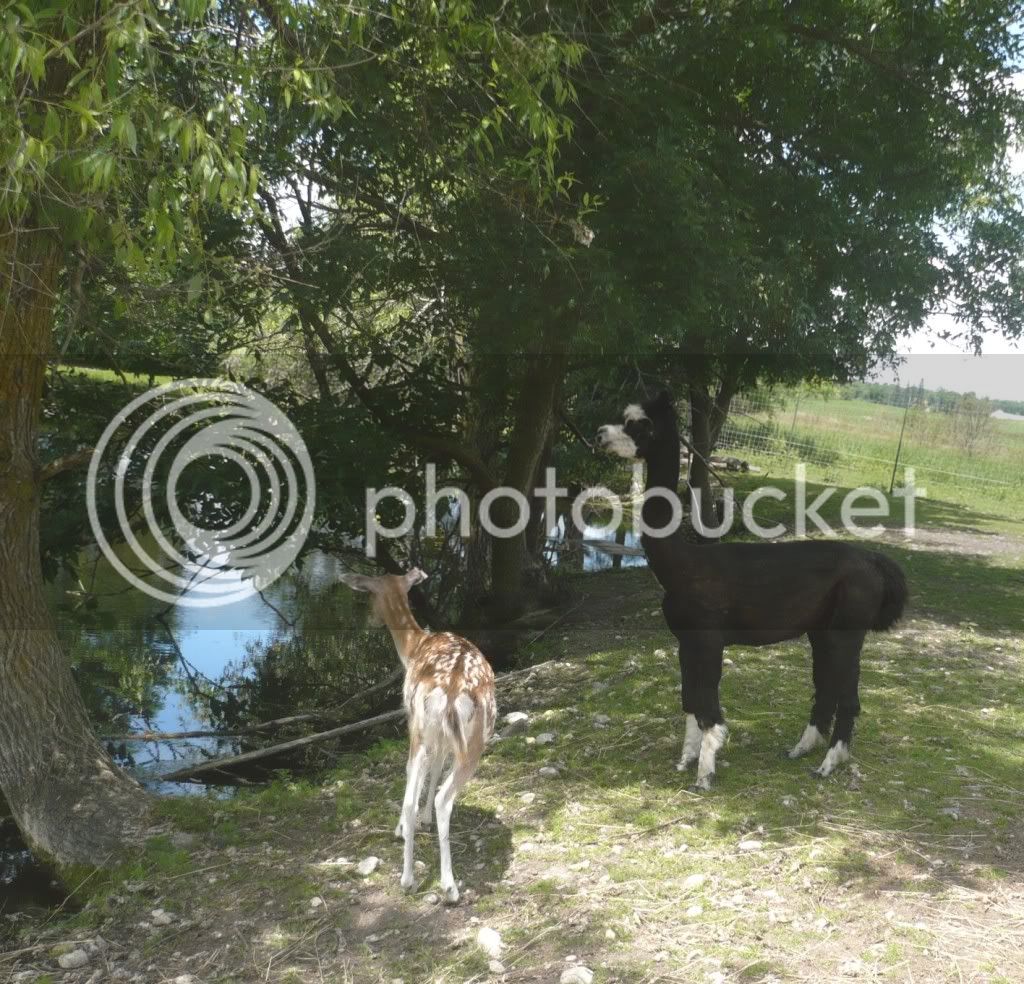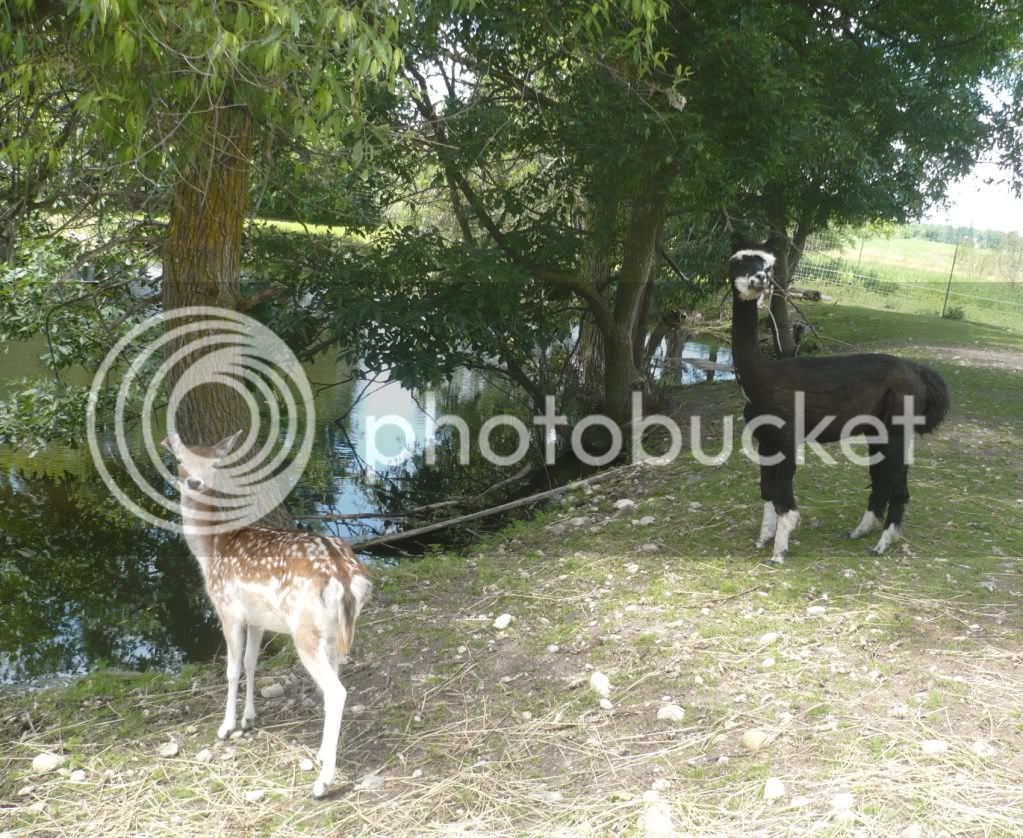Reble
Well-Known Member
Oh he is so small, but has already got the job done, we hope.
Keeping him here for a month, than sending him home after they come back from holidays.
Dream Catcher is liking his size....

So here is Mack the Alpaca brown male and Witch U Caller our Llama X Alpaca and Dream Catcher our fellow deer. Enjoying the nice sunny day .....



Added pics of water flowing down a few replys... with a sub pump if interested in keeping your
pond moving.
Keeping him here for a month, than sending him home after they come back from holidays.
Dream Catcher is liking his size....
So here is Mack the Alpaca brown male and Witch U Caller our Llama X Alpaca and Dream Catcher our fellow deer. Enjoying the nice sunny day .....



Added pics of water flowing down a few replys... with a sub pump if interested in keeping your
pond moving.
Last edited by a moderator:





